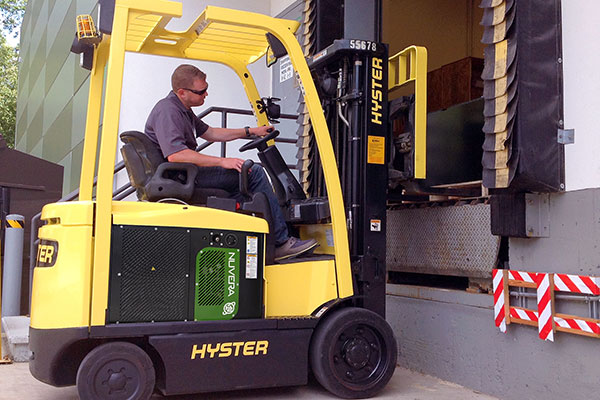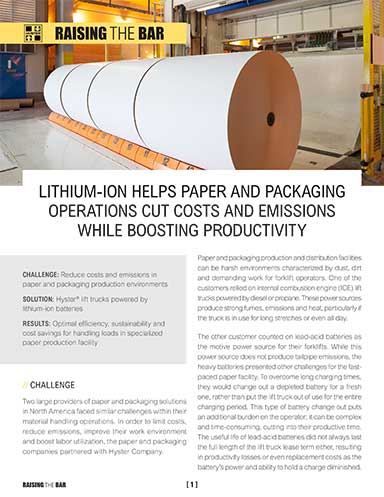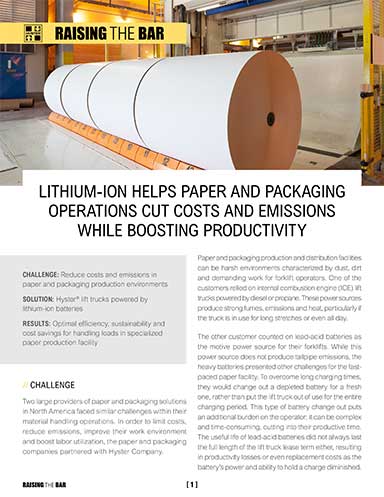Data as the Key to Better Lift Truck Maintenance
Being proactive about maintenance sounds great, but to make it work you need solid data and metrics on issues like cost per hour and the reasons why repairs were made.
Service providers can help with this as well as other pressing concerns like worker safety.
Plenty of details are involved in maintaining a lift truck fleet, from having operators who are disciplined about safety checks, to thorough lubrication, as well as attention to overlooked factors like the condition of battery chargers or attachments.
But back up from all these details, and the foundation is having good data and having a service provider who can help you capture and understand that data, says Allen Polk, vice president of sales at Kenco Group.
Without good data, says Polk, costs can escalate because it’s hard to make educated decisions like when to replace units or when to adjust recommended preventative maintenance (PMs) intervals based on use trends and site-specific conditions.
Allen Polk, vice president of sales at Kenco Group:
“First and foremost, the true key to controlling lift truck maintenance costs is data. It’s all about having good data and being able to decipher it, which is where having a good service partner comes in. You need a good service partner who is very transparent about your data.”
While today’s telematics and fleet management software can digitally capture data and help an operation understand costs, especially in regard to usage trends, it’s important that any lift truck service provider do things like properly categorize costs so they can be analyzed.
For example, repair costs associated with abuse or accidents should be earmarked as such, so when you compare costs for identical units bought at the same time, you can separate costs due to accidents. Or, adds Polk, some identical trucks of about the same age may have more costs associated with elective modifications like additional safety lights.
Polk adds:
“You really need to be able to back out and understand which costs are elective or accident related when you are assessing your life-to-date expenses for your fleet.”
Good, detailed data on repairs, usage trends and PMs will help an end-user organization and its service partner make decisions such as when it’s more cost effective to replace a unit rather than keep repairing it, or when it makes sense to tweak the standard PM intervals to achieve outcomes like better uptime.
Polk continues:
“An overarching question is always: When should I replace units? But, managing that replacement cycle well comes from having good data. Making good replacement decisions is really a culmination of having good data and metrics on utilization and on cost per hour, and then compare those against total life-to-date costs. When you have good data, you can make informed decisions.”
While some end-user companies have the discipline to collect adequate maintenance data and make plans about their fleet on their own, others lack enough data to make informed plans and end up seeing costs spiral upward, warns Polk. “So many companies tend to do things ad hoc, without really having a plan, and this can increase costs, because over time they may be replacing a piece of equipment too early or leaving others too long.”

Kenco’s fleet management service can take care of data management and maintenance cost analysis for a company, but any company with a lift truck fleet will benefit from a service provider who not only can provide highly trained technicians, but help capture and establish the data to make maintenance decisions. “It’s all about the data and the quality of the data,” says Polk.
The present pandemic conditions have led to increased concerns about facility hygiene, including keeping lift truck equipment clean and sanitized. While it’s good that companies are more focused on hygiene, PMs from service providers should not be skipped or delayed, says Ken Deters direct of service operations for Hyster-Yale Group.
Ken Deters, Director of Service Operations, Hyster-Yale Group:
“We’ve seen that Covid-19 has caused some organizations to postpone maintenance and repairs on lift trucks, for fear that a visiting technician might add to the virus risk. But reduced or skipped maintenance can create other dangers, such as the risk of reduced productivity or risk to operator safety.”
The wisest course, says Deters, is to avoid putting off service visits, while ensuring visiting technicians take proper steps like wearing masks and cleaning all touchpoints before and after service. Lift truck dealers may also be able to help by training operators on proper pre-shift sanitization procedures or by offering a stand-alone deep cleaning service for lift trucks.
Deters says Hyster-Yale has developed a comprehensive, customizable program for its dealers to assist with steps like sanitization training, providing sanitization and personal protective equipment supplies to customers, as well as supplying carrier kits for cleaning supplies that attach to lift trucks so supplies are easily accessible.
A dealer can also help with other facets of an updated safety and hygiene program, such as using lift truck telemetry to communicate sanitation instructions and reminders to operators. Lift truck telemetry can also enforce access control over specific lift trucks assigned to specific operators, which reduces risk.
Deters adds:
“Performing sanitization before and after every shift change is important, however, there are multiple aspects that help minimize risk for all parties during all steps of forklift contact, maintenance and readiness for operation.”
Related White Paper
Cut Total Cost of Ownership by Monitoring Operational Data
Today's telematics and fleet management tools allow lift truck owners to accurately monitor and measure truck data to make operational decisions that improve maintenance, reduce energy cost and maximize operator productivity—all resulting in a lower total cost of ownership. Download Now!
Article Topics
Hyster News & Resources
Hyster-Yale Group provides students with real-world AI experience in 2024 Kellogg Design Challenge Hyster recognizes Dealers of Distinction for 2023 Learn from lift truck service history Leasing’s fleet management upside Autonomous lift trucks emerge Autonomous Lift Trucks Emerge Enersys integrates its TPPL technology with Yale Power Key and Hyster Power Cellect More HysterLatest in Warehouse|DC
The Rise of the Stanley Cup: A Supply Chain Challenge GXO Logistics Deploys 500 Robots for Top Sporting Goods Retailer UPS Cuts Email Response Time in Half with AI Automation Cambium is on a Quest to Breathe New Life Into Old Wood Record High in Container Production Expected for 2024 IBM Investing $730 million to Expand Semiconductor Plant in Canada Indiana Tests Futuristic Highway that Can Charge EVs While Driving More Warehouse|DCAbout the Author















